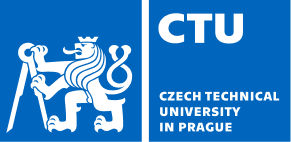About this course
The CAD4-Scripting course is intended for students who want to learn how to model algorithmically, rather than merely operate traditional CAD tools through manual repetitive clicking. It introduces the fundamentals of procedural and generative modeling in the visual scripting environment Grasshopper. The aim of the course is to equip students with the ability to develop their own set of digital tools, enabling them to design architectural structures and systems more efficiently and flexibly.
Instruction is conducted primarily through dialogue, with a strong emphasis on active collaboration. Core principles are derived together with students, fostering deeper understanding and greater independence in the design process. Each session is built around a specific design challenge (e.g. skyscraper design, riverside urbanism, structural optimization, façade components), and some assignments also address digital fabrication methods such as 3D printing, CNC milling, and laser cutting.
The course is primarily intended for beginners in the field of parametric and generative design. However, for advanced students who have already completed CAD 3 – Scripting, an individual plan is available. This plan focuses on an independently developed project under the guidance of the instructor. The approach builds on the proven concept of CAD 3, allowing talented students to achieve a high level of autonomy within a single semester.
Learning outcomes
Course Objectives The aim of the course is to develop students’ ability to design using algorithmic, procedural, and non-destructive modeling methods—an essential shift away from traditional, manually oriented digital design practices. Students will learn to design systems whose geometry can be efficiently adapted by modifying input parameters or the sequence of generative operations, without the need to rebuild the model from scratch. This modeling approach reflects the current standards of leading international universities (e.g. ETH Zürich, TU Delft, ITKE Stuttgart) and is widely adopted in prominent architectural practices (e.g. MVRDV, BIG, Snøhetta).
Students will acquire foundational skills in the Rhino–Grasshopper visual scripting environment and explore its expandability through community-developed plugins. The course places emphasis on the practical application of these tools in solving real-world architectural and urban design tasks and on connecting them with current issues in spatial design.
A procedural approach allows for efficient generation and iteration of design variants (shortening the design loop), creating space for both qualitative and quantitative optimization. Students will be able to design with respect to complex evaluative criteria such as daylighting and solar exposure, structural performance, wind behavior, life cycle assessment (LCA), spatial quality (e.g. via space syntax), and other aspects of sustainable and performance-driven design.
Learning Outcomes Upon successful completion of the course, the student will be able to:
-
Explain the core principles of algorithmic, parametric, and procedural modeling, and describe their advantages over traditional design approaches.
-
Navigate the visual scripting environment Rhino–Grasshopper and its extended functionality through various plugins.
-
Design and implement a custom generative model for an architectural or urban design task using visual programming techniques.
-
Modify a design by changing input parameters or scripting logic without the need for manual reconstruction of the model (non-destructive workflow).
-
Apply procedural modeling principles to specific design challenges, including high-rise buildings, urban structures, façade systems, and structural components.
-
Critically evaluate and discuss the design process based on outputs from generative systems.
-
Optimize a design according to selected quantifiable criteria (e.g. solar gain, structural efficiency, airflow, LCA, spatial quality).
-
Collaborate in a dialogical and iterative design environment, emphasizing knowledge sharing and awareness of diverse design strategies.
-
Independently manage a complex design process using generative principles and prepare outputs for digital fabrication (3D printing, CNC, laser cutting).
-
Reflect on their own design approach and propose further directions for the development of digital tools in response to specific architectural challenges.
Course requirements
Basic computer skills.
The minimum number of students to open the course is 5. EXCEPTION for self-paying students: if there are less than 5 students, the course will be taught in consultations.
Resources
- Pottmann, H., Asperl, A., Hofer, M., Kilian, A.: Architectural Geometry, Bentley Institute Press, 2007
- Online zdroje
- http://www.grasshopper3d.com/page/tutorials-1
- https://youtu.be/fNk_zzaMoSs
- https://www.khanacademy.org/math/trigonometry
- https://youtu.be/OmJ-4B-mS-Y
- https://www.youtube.com/watch?v=jvPPXbo87ds
- http://wiki.bk.tudelft.nl/toi-pedia/Math_Inspired_Geometry_in_Grasshopper
- https://www.rhino3d.com/download/Rhino/4.0/EssentialMathematicsSecondEdition
- http://docs.mcneel.com/rhino/6/training-level1/en-us/Default.htm
- https://www.rhino3d.com/learn/?query=kind:%20architecture&modal=null
- https://modelab.gitbooks.io/grasshopper-primer/content/1-foundations/1-foundations.html
- https://www.youtube.com/watch?v=aVwxzDHniEw
- https://www.youtube.com/watch?v=hhDuYLngfSg
Activities
During the lesson, the basic principles of generative and parametric modelling are demonstrated (see lesson schedule). Each demonstration is addressed in the context of a design problem, e.g., skyscraper, urban planning around a river, optimization of a supporting structure, façade components, etc.
Additional information
- Coordinating facultyCzech Technical University in Prague
- Contact a coordinator
- LevelMaster
- Contact hours per week2
- Instructorsprof. Dr. Achten Henri Hubertus, Ing. arch. Prokop Šimon
- Mode of deliveryBlended
Starting dates
22 Sept 2025
ends 15 Feb 2026
Language English Term * Winter 2025/2026 Course is currently running
